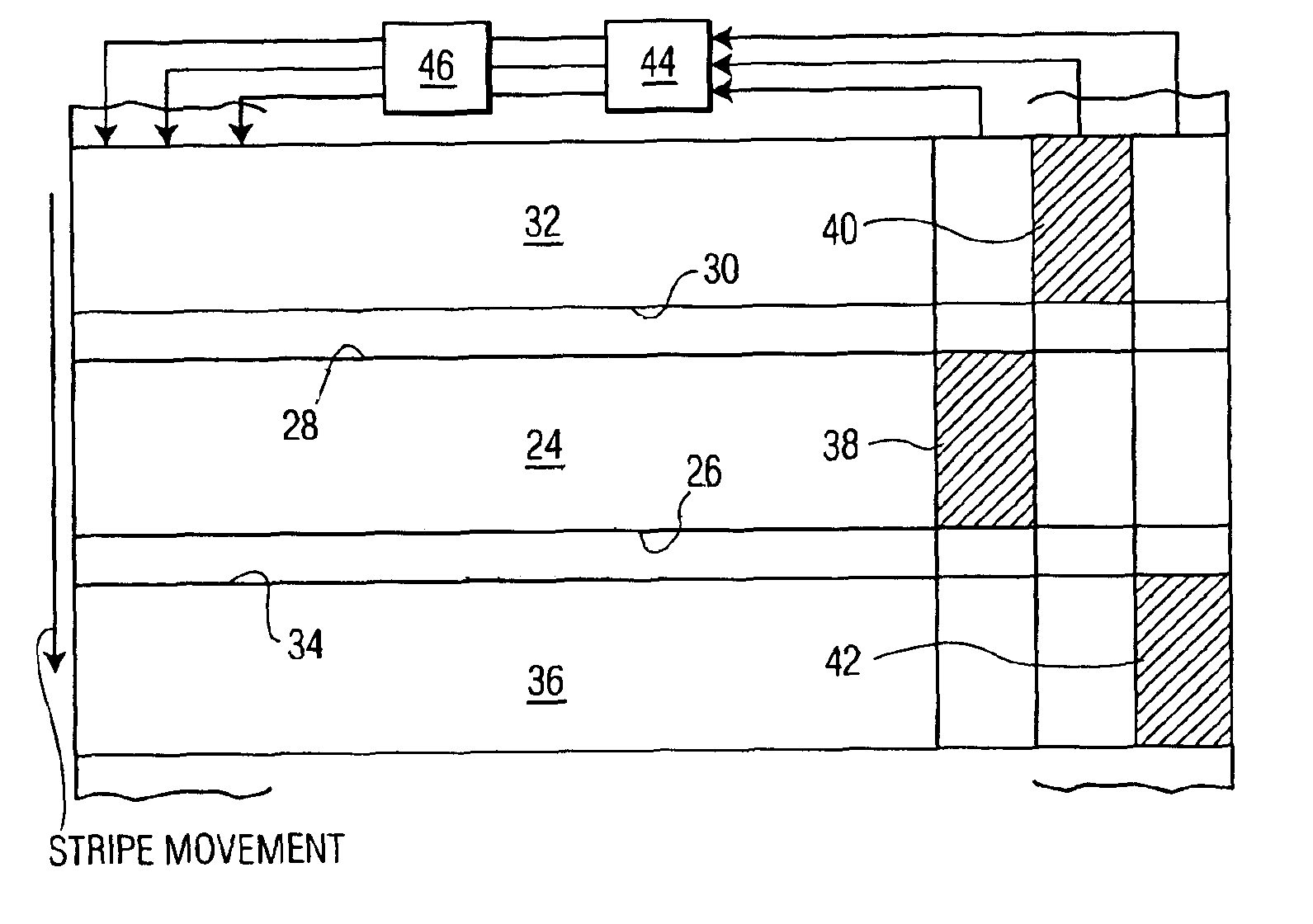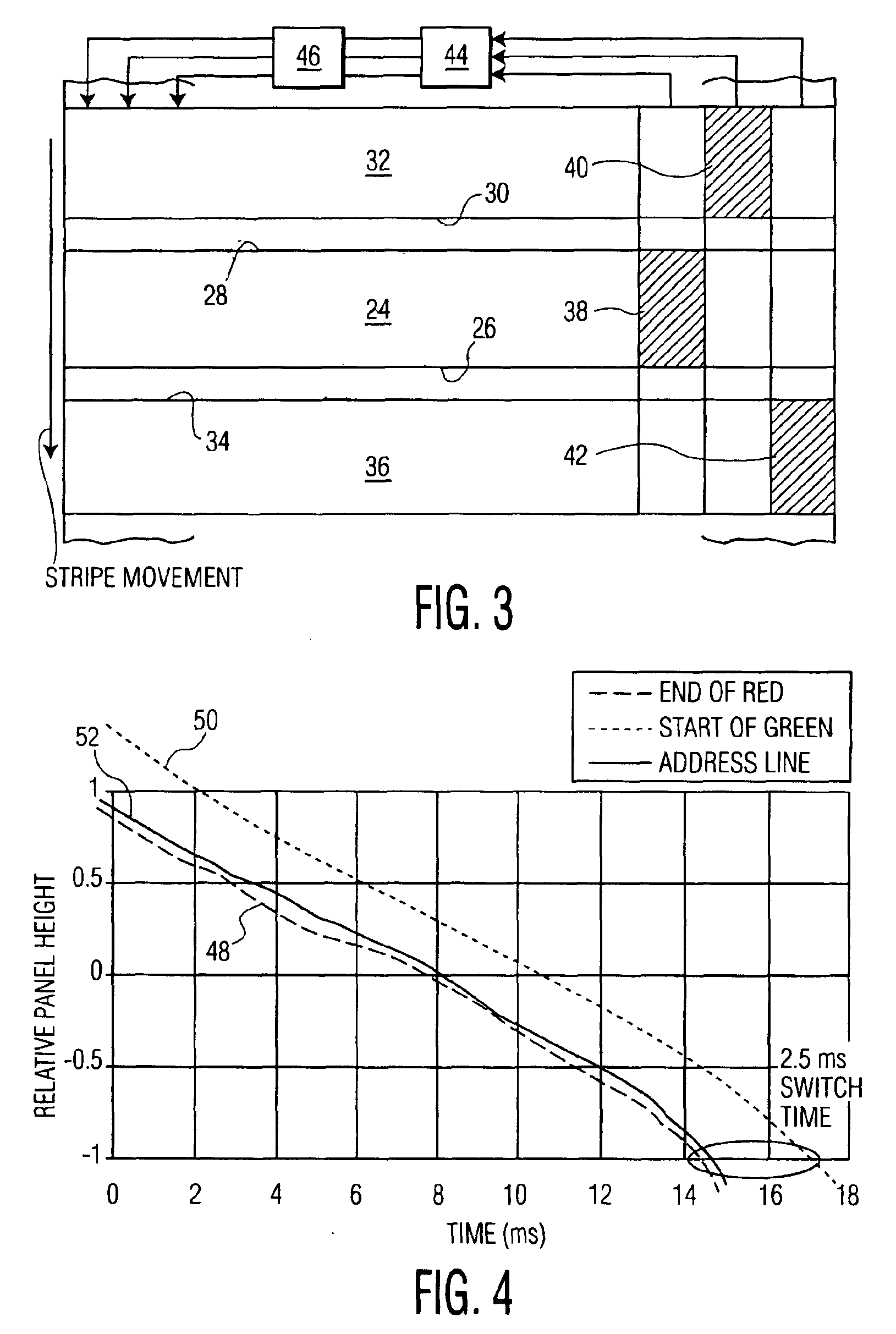Synchronizing optical scan and electrical addressing of a single-panel, scrolling color LCD system
a color liquid crystal display and optical scan technology, applied in the field of color liquid crystal displays, can solve the problems of system remaining susceptible to color errors and inter-color mixing artifacts, and achieve the effect of better color rendition of the displayed imag
- Summary
- Abstract
- Description
- Claims
- Application Information
AI Technical Summary
Benefits of technology
Problems solved by technology
Method used
Image
Examples
Embodiment Construction
[0012]Optical scans of LCD panels with successive color stripes (red, green and blue) are generated by a set of three scanning prisms. Although the prisms rotate at an essentially constant angular velocity, the stripes produced on the surface of the panel do not necessarily move at a constant linear velocity. This means that the distances between stripes (from the trailing edge of one stripe to the leading edge of the next) may change as the stripes are scrolled across the surface of the panel as the relative velocity of the stripes varies. The electrical addressing of the rows of the panel with data relating to the next color to be scanned proceeds at a constant, linear velocity irrespective of the velocities of the color stripes. To effectively display an image on the panel, the electrical address must be applied to a row at least a certain minimum time prior to the color stripe impinging upon that row in order to allow sufficient time for the pixels on the panel to switch from on...
PUM
| Property | Measurement | Unit |
|---|---|---|
| critical switching time | aaaaa | aaaaa |
| critical switching time | aaaaa | aaaaa |
| colors | aaaaa | aaaaa |
Abstract
Description
Claims
Application Information
 Login to View More
Login to View More - R&D
- Intellectual Property
- Life Sciences
- Materials
- Tech Scout
- Unparalleled Data Quality
- Higher Quality Content
- 60% Fewer Hallucinations
Browse by: Latest US Patents, China's latest patents, Technical Efficacy Thesaurus, Application Domain, Technology Topic, Popular Technical Reports.
© 2025 PatSnap. All rights reserved.Legal|Privacy policy|Modern Slavery Act Transparency Statement|Sitemap|About US| Contact US: help@patsnap.com



